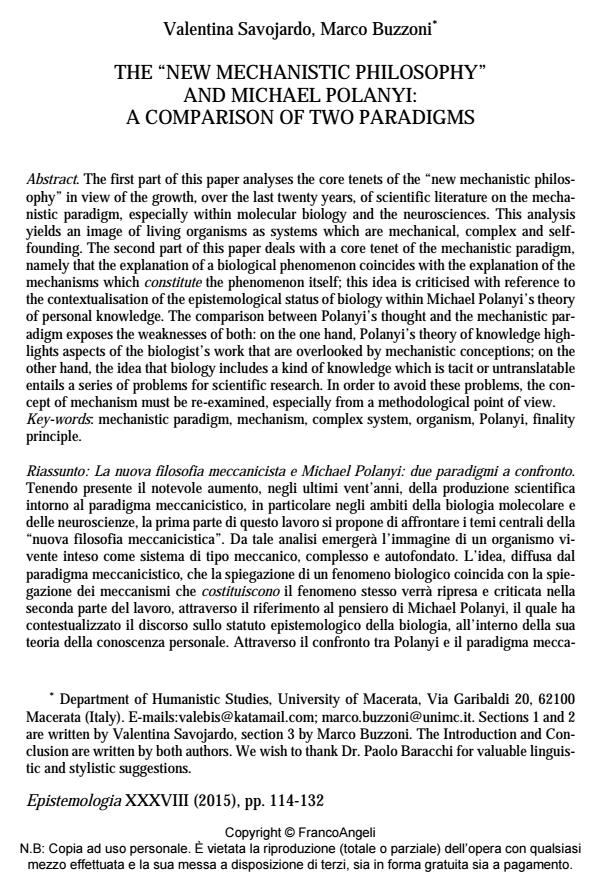The "new mechanistic philosophy" and michael polanyi: a comparison of two paradigms
Journal title EPISTEMOLOGIA
Author/s
Publishing Year 2015 Issue 2015/1
Language English Pages 19 P. 114-132 File size 102 KB
DOI 10.3280/EPIS2015-001008
DOI is like a bar code for intellectual property: to have more infomation
click here
Below, you can see the article first page
If you want to buy this article in PDF format, you can do it, following the instructions to buy download credits

FrancoAngeli is member of Publishers International Linking Association, Inc (PILA), a not-for-profit association which run the CrossRef service enabling links to and from online scholarly content.
The first part of this paper analyses the core tenets of the "new mechanistic philosophy" in view of the growth, over the last twenty years, of scientific literature on the mechanistic paradigm, especially within molecular biology and the neurosciences. This analysis yields an image of living organisms as systems which are mechanical, complex and selffounding. The second part of this paper deals with a core tenet of the mechanistic paradigm, namely that the explanation of a biological phenomenon coincides with the explanation of the mechanisms which constitute the phenomenon itself; this idea is criticised with reference to the contextualisation of the epistemological status of biology within Michael Polanyi’s theory of personal knowledge. The comparison between Polanyi’s thought and the mechanistic paradigm exposes the weaknesses of both: on the one hand, Polanyi’s theory of knowledge highlights aspects of the biologist’s work that are overlooked by mechanistic conceptions; on the other hand, the idea that biology includes a kind of knowledge which is tacit or untranslatable entails a series of problems for scientific research. In order to avoid these problems, the concept of mechanism must be re-examined, especially from a methodological point of view.
Keywords: Mechanistic paradigm, mechanism, complex system, organism, Polanyi, finality principle.
, The "new mechanistic philosophy" and michael polanyi: a comparison of two paradigms in "EPISTEMOLOGIA" 1/2015, pp 114-132, DOI: 10.3280/EPIS2015-001008